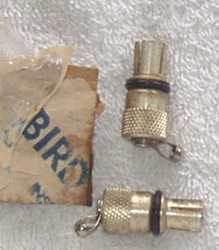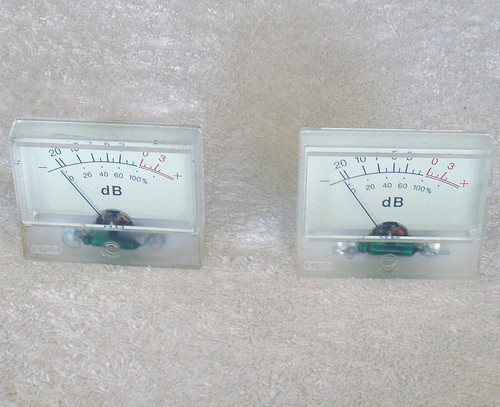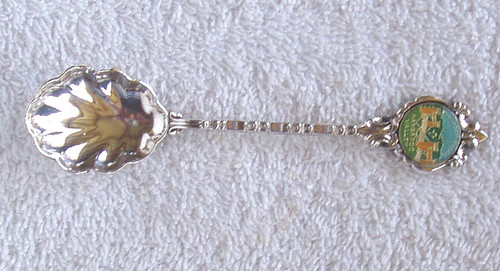HISTORY:
Sustainability is the name of the game! Anything (that has been tested and still functioning properly) should be repurposed creating saving in wasted Ee and reducing the poisoning our environment when items are buried in the earth at the local tip needlessly.
Never heard of Ee? It is a concept that creates a measurement of ALL things (not just electronics) that humans have made and the energy used in obtaining the raw material, processing the materials right through to a finished product and even should include the shipping of the item to the distributors/retailers.
If you would like to know more about Ee values, please take a look HERE
PONDER NO MORE!
A very knowledgeable person recognised these instantly as sensor devices to be used with a BIRD RF Load dating from the 1960's ~ 70's
So if you find any of these peculiar plugs in your own collection, keep them or find a new useful home for them!
This high quality accessory was amongst my box of RF goodies from long ago (this box contained items from the 1970's ~ 1980's) ... in fact it is new, unused and until today it was still in a sealed packet of two

Problem is ... I cannot for the life of me recall which test equipment it was used for (I had a LOT once upon a time) or even what this plug type is called.
When removed from the packet (which was branded as BIRD Instruments) the whole body was a Yellowish colour - a sure sign that it is Silver plated, see one of the photographs to what how these appeared before a "polish up"
It "looks" very much like a stock standard Belling Lee connector which was commonly used for domestic television aerial systems but it is NOT a Belling Lee. This plug has a smaller diameter (8mm OD) body plus there is a rubber grommet fitted halfway along the length of the body so that when it mates with the female socket, it becomes a tight friction fit of the two. This is not a screw on type of plug, there are no threads.
But theres more ...
The centre pin contact and rear disc inside are absolutely Gold plated - not Brass as I first thought.
Initially I thought this was easy ... Ah yes, a good old terminator for either 50 or 75 Ohm systems IT IS NOT
A dc resistance of the plug shows the internals are directional i.e I measured DC resistance of 4500 Ohm (not 50 or 75 Ohm as I was expecting) but upon voltage reversal I had much higher measurements. I then put this on a component tester and indeed, the instrument tells me "Ah mate, you have a diode inside that there shiny thingee!) Forward voltage indications were 500mV, a bit high for Germanium but a bit low for Silicon too. Perhaps a Schottky diode?
As to it's purpose in life, I have no idea. As it has a ball-chain securing loop I believe it was not intended to be moved around and was secured near the mating equipment socket
I do not recall having any gear which needed an external diode plugged into it, nor any BIRD gear except a old RF directional power meter from many years ago. This type of plug "looks" like a Belling Lee but the size and design is not quite right - this does however lean me to thinking that the equipment this was to be used with was of British heritage, not American.
The plug has four flanges at the front, very similar to N type connectors but again I tried to fit into an N type female but this plug is smaller and the centre pin too large - it does not suit an N type.
Same for a standard Belling Lee, that centre pin on this plug is just too wide (estimated 1.1mm diameter)
The plug has definitely been well engineered & manufactured and as far as I can see, completely sealed - the manufacturer has provided no way of entry inside the connector. The body is completely one piece (I even looked under the rubber grommet ring for a tiny screw!) and the rear ball-chain loop is riveted to the body - in fact this rivet holds the front centre pin in place as well. There is no way to get inside and try to read a part number or anything like that.
I have added the ball-chain to "complete the package" - it was not originally with this plug.
So there you go ... perhaps someone will instantly recognise this plug or better still, like to add it to their museum of old RF accessories (it was definitely used with some of the RF test gear I used to have, perhaps some of the RACAL but I am not sure)
Enough of the introduction ... I will now describe the plug in closer detail
UNKNOWN MANUFACTURER - RF Plug
Body base material unknown, possibly Brass
ALL Silver plated
Centre contact pin and its rear supporting disc are definitely Gold plated, not raw Brass
Rubber grommet fitted into a recessed groove which is located about halfway down the plug barrel.
DIMENSIONS:
BODY: 26mm Front to Rear
8mm OD front section x 8.75mm length at which point there is a recess in the body, into which is fitted a round rubber grommet.
11.25mm OD is the diameter of the remaining body toward the rear, the last 6.9mm being knurled for finger gripping.
It would appear that the mating socket has a body length of 16.9mm as this plug would be inserted into the mating socket so that it fits over and past the rubber grommet and right up to the knurled body area.
The centre pin is estimated at 1.1mm OD - it is a bit tough fitting my micrometer fingers inside the plug so this is a close estimate.
TESTING:
DC resistance tests show there is a directional component inside the plug, most likely a diode of some sort.
COSMETIC CONDITION:
NEW (removed from the sealed blister pack just today - this pack was only marked (in Blue print) as BIRD International
I know BIRD (USA) design and manufacture some very nice RF equipment but I would have expected this type of plug to be used with British or at a pinch, European equipment.
CLEAN - Silver had tarnished when removed from the packet but I have polished up the Silverware!
There was originally no ball-chain with securing loop, I have fitted one that I had lying around.
This plug has now been packed back into a sealed, clear plastic pack awaiting someone else to ponder over just what its original purpose in life was!













